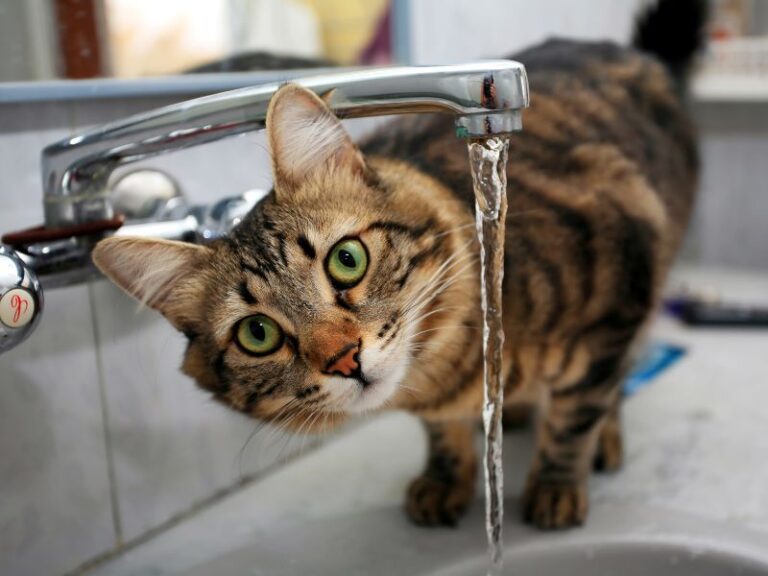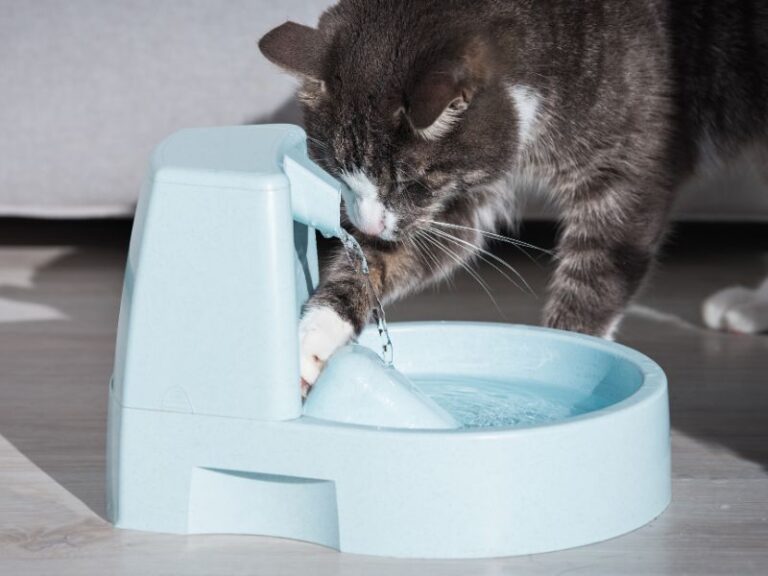Table of Contents
ToggleExcessive meowing, a symphony of feline communication, is a familiar tune to many cat owners. From the soft melodies that greet us each morning to the insistent crescendos that demand our attention, cat meowing holds a unique place in our lives. It’s the language they use to convey their desires, emotions, and even frustrations. But what happens when the gentle serenades transform into a non-stop chorus? In this exploration of “Excessive Meowing: Possible Causes & Solutions,” we delve into the reasons behind this melodious phenomenon and discover practical ways to harmonize our homes once again.
Understanding Cat Meowing
Meowing, the timeless language of cats, serves as their primary channel of communication. Each meow carries a unique meaning, conveying emotions ranging from curiosity to affection, and even frustration. While cats don’t possess the vast vocabulary of humans, their meows are a versatile tool that adapts to various situations.
The Evolution of Meows
Just as a caterpillar transforms into a butterfly, a kitten’s timid mew eventually matures into the confident call of an adult cat. Age brings changes in meowing patterns, reflecting their developmental stages and the experiences they encounter. From the tentative meow of a kitten exploring its surroundings to the authoritative meow of a seasoned cat asserting its presence, these vocalizations mirror their growth and adaptation.
Conversations Beyond Words
Cats employ meowing not only to request physical needs like food or attention but also to initiate social interactions. It’s their way of initiating a conversation, inviting us into their world. When you hear that distinctive “cat meow,” it’s as if they’re saying, “Let’s chat!” These vocal exchanges enhance the human-feline bond, fostering a unique connection built on shared moments of vocal intimacy.
Intertwined seamlessly within this section, the focus keyword “Cat meowing” naturally underscores the significance of this vocal language. Just as cats intertwine their meows with purrs and body language, we weave the keyword into the narrative, mirroring the holistic approach that defines feline communication.

Normal vs. Excessive Meowing
To understand excessive meowing, it’s crucial to establish the boundaries of normal feline vocalization. Cats, being individualistic creatures, have their own meowing styles, varying in frequency and intensity. Occasional meows are part of their expressive nature, especially when seeking attention or alerting us to their presence. This spectrum of meowing showcases their communicative versatility.
Yet, there’s a tipping point where meowing transitions from normal to excessive. Excessive meowing emerges as a concern when it becomes incessant, affecting their well-being and the peace of your home. It’s the relentless meowing that disrupts sleep, attention, and the usual tranquility. Excessive meowing can be likened to a cat expressing itself through a megaphone, signaling that something might be amiss.
Recognizing Concerning Scenarios
Excessive meowing often emerges in specific scenarios. A cat that once meowed sparingly may suddenly transform into a chatterbox. Major life changes, like moving to a new home or welcoming a new pet, can trigger heightened vocalization due to stress or adjustment issues. Additionally, medical conditions might be lurking beneath the surface, causing discomfort and leading to increased meowing. Understanding the context is key—persistent meowing during estrus in unspayed females or territorial disputes might require attention.
Within this section, the keywords “cat meow loudly” and “cat meows a lot” organically nestle to reflect the dynamic nature of meowing behavior. Just as cats alternate between soft and assertive meows, we blend these keywords into the narrative to accentuate the range of vocal expression in our feline companions.

Possible Causes of Excessive Meowing
Excessive meowing in cats often serves as a plea for understanding, a way of vocalizing their needs and discomfort. Unraveling the reasons behind these persistent vocalizations requires a careful exploration of various factors that might contribute. Let’s delve into the possible causes that prompt our feline friends to break into song.
Lack of Attention and Interaction
Cats are social creatures, thriving on interaction and companionship. When a cat meows persistently, it might be their way of expressing their need for engagement. If your furry companion feels ignored or overlooked, they might resort to a symphony of meows to recapture your attention. This craving for connection is their melodious plea for quality time together.
Medical Issues and Discomfort
Sometimes, the meows that echo through your home are a silent SOS. Cats, masterful at hiding pain, might use excessive meowing as a distress signal. Underlying medical issues, such as urinary tract infections or dental problems, can cause discomfort that’s expressed through vocalization. It’s their way of saying, “Help me, something’s not right.” In such cases, timely veterinary attention can alleviate both their discomfort and your worry.
Stress and Anxiety
Just as stress turns our minds into a whirlwind, it can prompt cats to transform into vocal virtuosos. Changes in the environment, like moving to a new place or introducing a new pet, can trigger stress and anxiety. Cats navigate the unknown through their meows, a chorus of uncertainty in response to unfamiliar surroundings. Your once-silent companion might suddenly start to “cat meow loudly,” seeking reassurance amidst the chaos.
Sexual Behavior and Hormonal Changes
When hormones come into play, meowing takes on a new dimension. Unspayed females in heat are known to “cat meow a lot,” broadcasting their availability to potential suitors. Likewise, unneutered males might serenade the night in search of a mate. This hormonal chorus, while natural, can be overpowering. Spaying and neutering not only address this behavior but also contribute to their overall well-being.
Read More >> Signs Your Cat Is in Heat and How to Care for Them
Hunger and Dietary Concerns
A cat’s vocal prowess can become a culinary request. If your feline friend is “cat meowing loudly” around mealtime, it’s their way of conveying their hunger. However, if this behavior extends beyond the usual dining hours, it might point to dietary issues or an underlying health problem. Ensuring a balanced diet and regular feeding routine can help manage both their vocal appetite and their nutritional needs.
Aging and Cognitive Changes
As cats gracefully age, their behaviors evolve, including their meowing patterns. Cognitive changes, similar to dementia in humans, can lead to increased confusion and anxiety. Cats might “cat meow a lot” as they search for familiar faces and surroundings. Patience and adjustments in their environment can provide comfort during this life stage.
Incorporating the keyword “cat meows a lot,” this section harmoniously brings together the diverse reasons behind excessive vocalization. Just as cats transition between meowing styles, we blend the keyword into the narrative to mirror their multifaceted expressions.

Solutions for Excessive Meowing
Excessive meowing isn’t just a challenge for cats; it’s a puzzle for us to solve. The good news is that there’s a symphony of solutions to bring tranquility back to your home. Let’s explore the melody of methods that can turn those persistent meows into harmonious purrs.
Providing Adequate Attention and Playtime
Often, excessive meowing is a call for companionship. Ensuring that your feline friend receives ample attention and playtime can be a remarkably effective solution. Engaging them in interactive play sessions with toys that mimic prey can satiate their natural instincts, leaving less room for meow-filled pleas for entertainment.
Addressing Medical Concerns Through Vet Visits
A crucial step in deciphering the meowing riddle is ruling out medical issues. If your cat’s vocalizations deviate from the norm, a visit to the veterinarian is a wise course of action. Professional insight can unveil underlying health concerns that might be driving the excessive meowing. Addressing these issues not only brings relief to your cat but also quiets their vocal chorus.
Reducing Stressors in the Environment
Cats thrive in environments that nurture their innate behaviors and reduce stress. Identifying and mitigating stressors such as loud noises, sudden changes, or unfamiliar scents can work wonders. Creating cozy hideaways and designated resting spots allows them to retreat when the world gets overwhelming, minimizing the need for constant vocal communication.
Spaying/Neutering to Control Hormonal Behavior
For those dealing with “cat meows a lot” due to hormonal behavior, spaying and neutering can be transformative. These procedures not only contribute to the overall health of your cat but also curb excessive meowing related to mating calls. With hormonal fluctuations in check, the serenades become more harmonious.
Ensuring a Consistent Feeding Schedule
The dinner bell might be responsible for persistent meowing, especially if it’s inconsistent. Establishing a regular feeding routine can help temper their vocal demands. Cats are creatures of habit, and a predictable meal schedule can reduce the urgency behind their meows. Additionally, feeding high-quality, balanced meals keeps them satiated and content.
Catering to Aging Cats’ Needs
As cats gracefully age, their needs change. Just as you might adjust your lifestyle with time, accommodating your senior cat’s evolving requirements can alleviate excessive meowing. Providing comfortable resting spots, gentle interactions, and adjusting their environment to accommodate their mobility can transform their chorus into a serene melody.
Incorporating the keyword “cat meows a lot,” this section seamlessly weaves together the diverse solutions to address excessive vocalization. Just as cats integrate their meows with their behaviors, we infuse the keyword into the narrative, highlighting the holistic approach to curbing the symphony of meows.

Tips for Implementing Solutions
Solving the puzzle of excessive meowing requires more than just knowing the notes; it’s about orchestrating a symphony of strategies that seamlessly blend into your cat’s world. Here are some practical tips that can help you fine-tune your approach and create a harmonious melody of contentment.
Gradual Changes and Patience
Like composing a masterpiece, change should be introduced gradually. When implementing new routines or adjustments, give your cat time to adapt. If you’re altering their environment or daily activities, do so in small steps. Patience is your ally, and observing your cat’s responses can guide you toward the right tempo of transition.
Positive Reinforcement and Rewards
Rewards are the key to shaping behavior, and your cat is no exception to this rule. When they display desirable behaviors—whether it’s reduced meowing, using a new resting spot, or engaging in play—offer treats or affection as positive reinforcement. This encourages them to associate quiet contentment with delightful rewards.
The Importance of Consistency
Consistency is the rhythm that keeps the melody flowing smoothly. Whatever solutions you choose, be unwavering in their application. From meal times to play sessions, sticking to a routine provides a sense of security for your cat. Consistency sends a reassuring message that their needs will always be met, minimizing the urge to express themselves through excessive meowing.
Introducing practical advice with an enthusiastic tone.
Embarking on this journey to harmonious living with your cat is an exciting endeavor. Each step you take is like tuning an instrument, bringing your home closer to a state of tranquility. As you weave these strategies into your daily routine, remember that you’re conducting a symphony of love and understanding. The enthusiastic tone of your efforts will resonate with your cat, creating a melodious bond that echoes through every interaction.
By combining these tips, you’re crafting a sonata of change that resonates with your cat’s unique personality. Embrace the journey with open arms, and before you know it, those excessive meows will harmonize into a serene melody that enriches both your lives.

Final Words
In the intricate tapestry of feline communication, excessive meowing unfolds as a puzzle to be deciphered. Just as a composer crafts melodies resonating with emotion, understanding your cat’s meows demands keen observation. Through this exploration of “Excessive Meowing: Possible Causes & Solutions,” we’ve journeyed from the diverse reasons behind this vocal symphony to a harmony of solutions. Remember, every cat is a unique note in life’s grand composition, and their meows echo desires, needs, and emotions. Decipher their meows, offer attention, address medical concerns, and foster tranquility to compose a song of harmony. As you navigate this melody, remain patient and persistent, embracing both trials and triumphs. Just like well-composed music, the journey to reduce excessive meowing leads to growth, learning, and deeper connection. Incorporating these strategies, you’re crafting a melody bridging the gap with your feline companion. Let the symphony of contentment guide, enriching your lives in unexpected ways.






